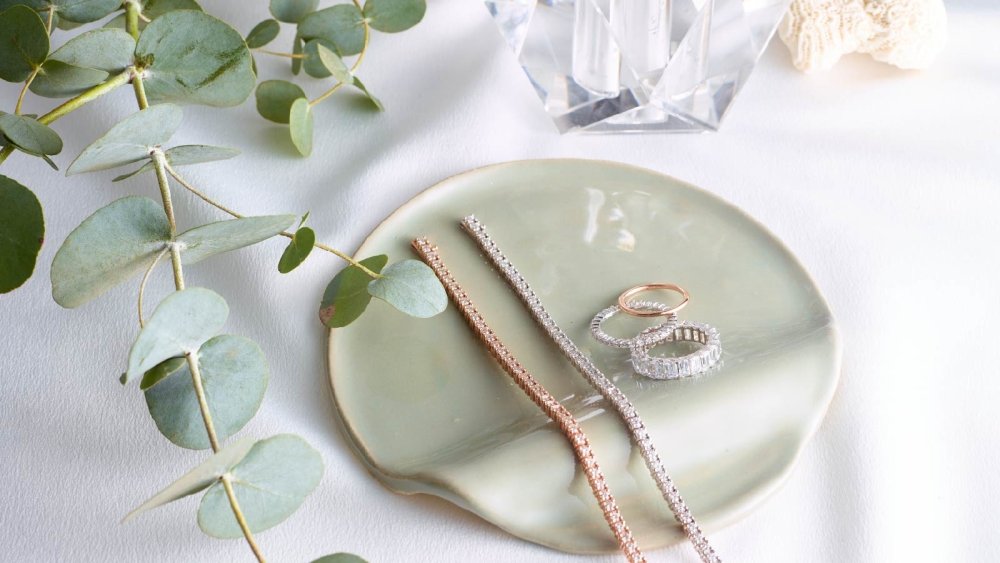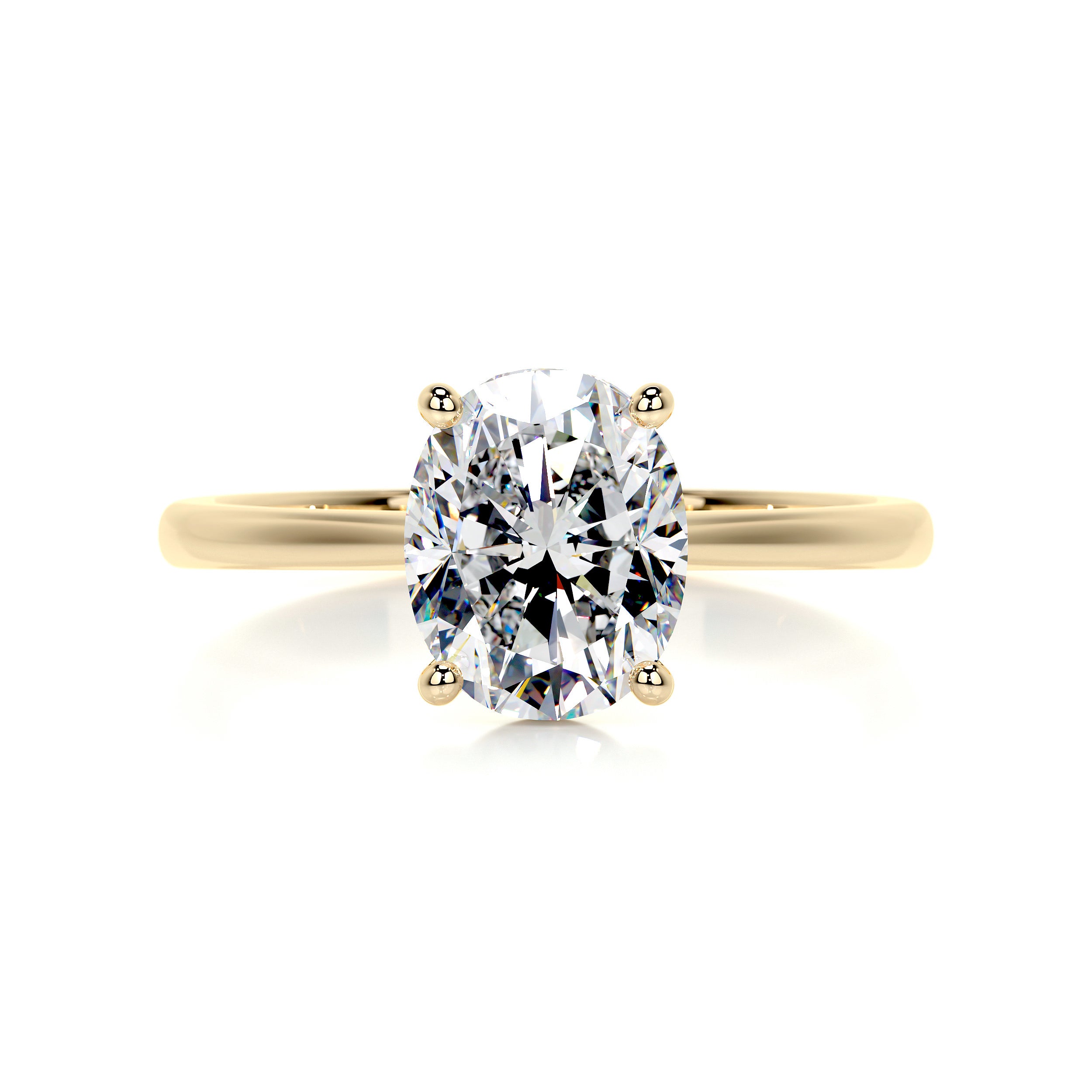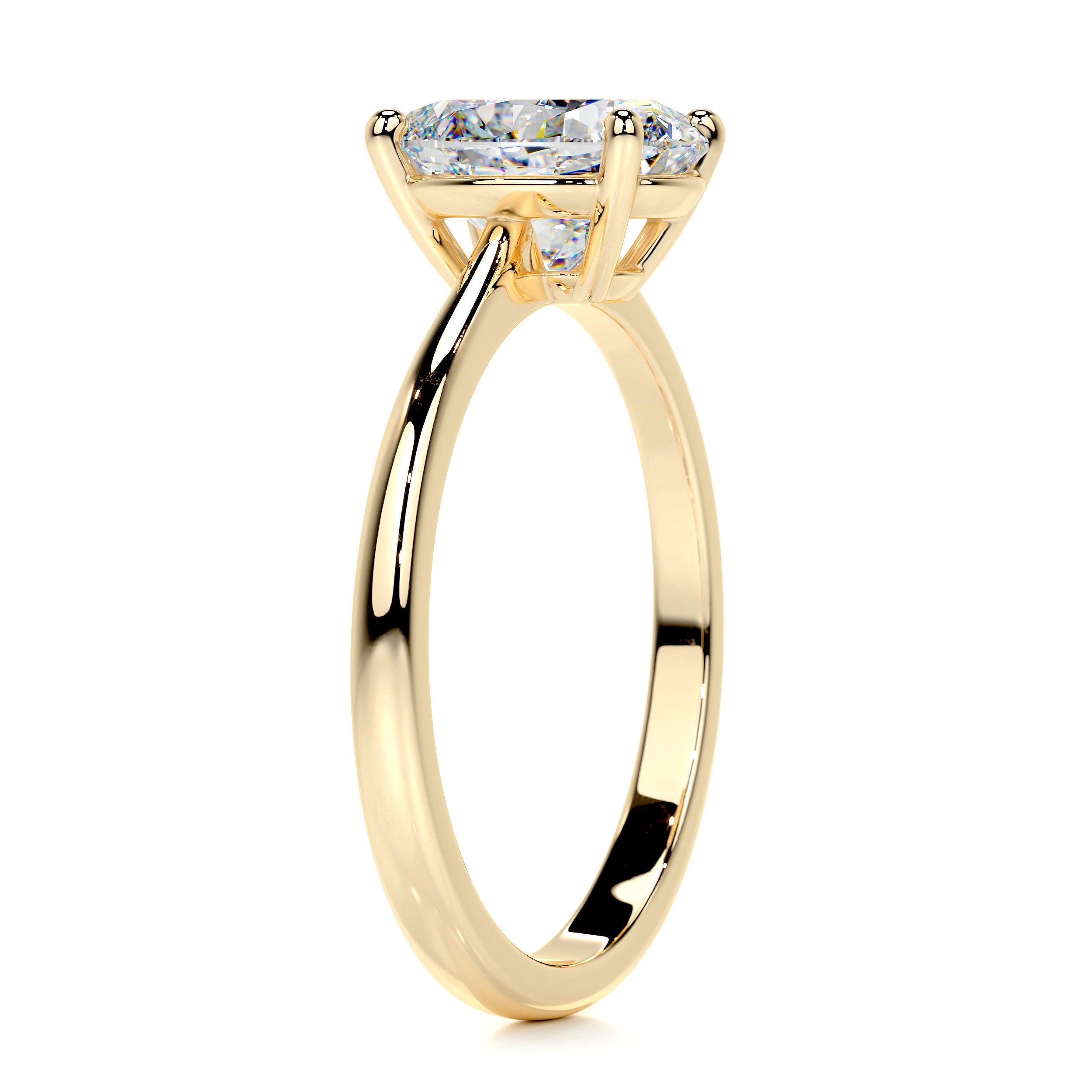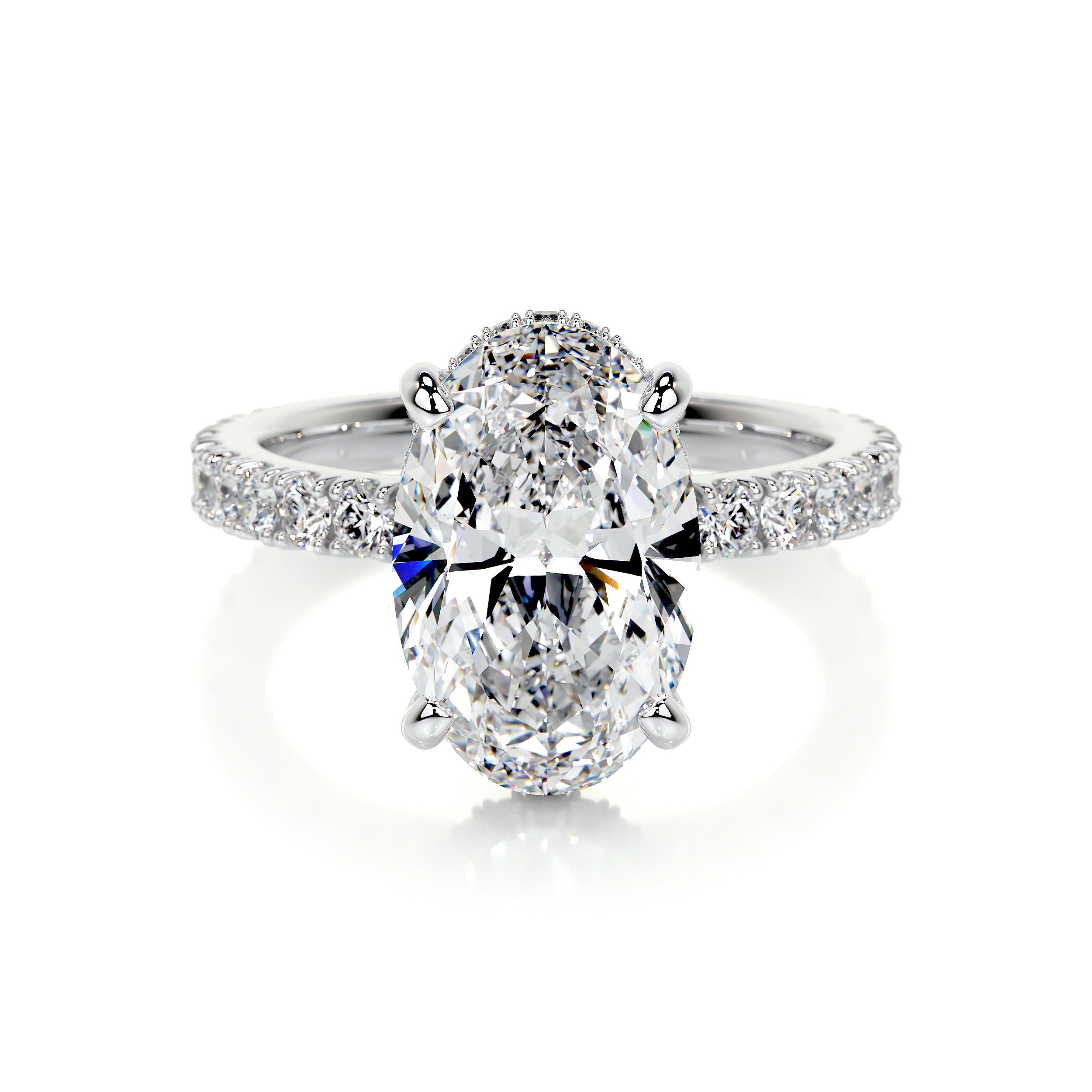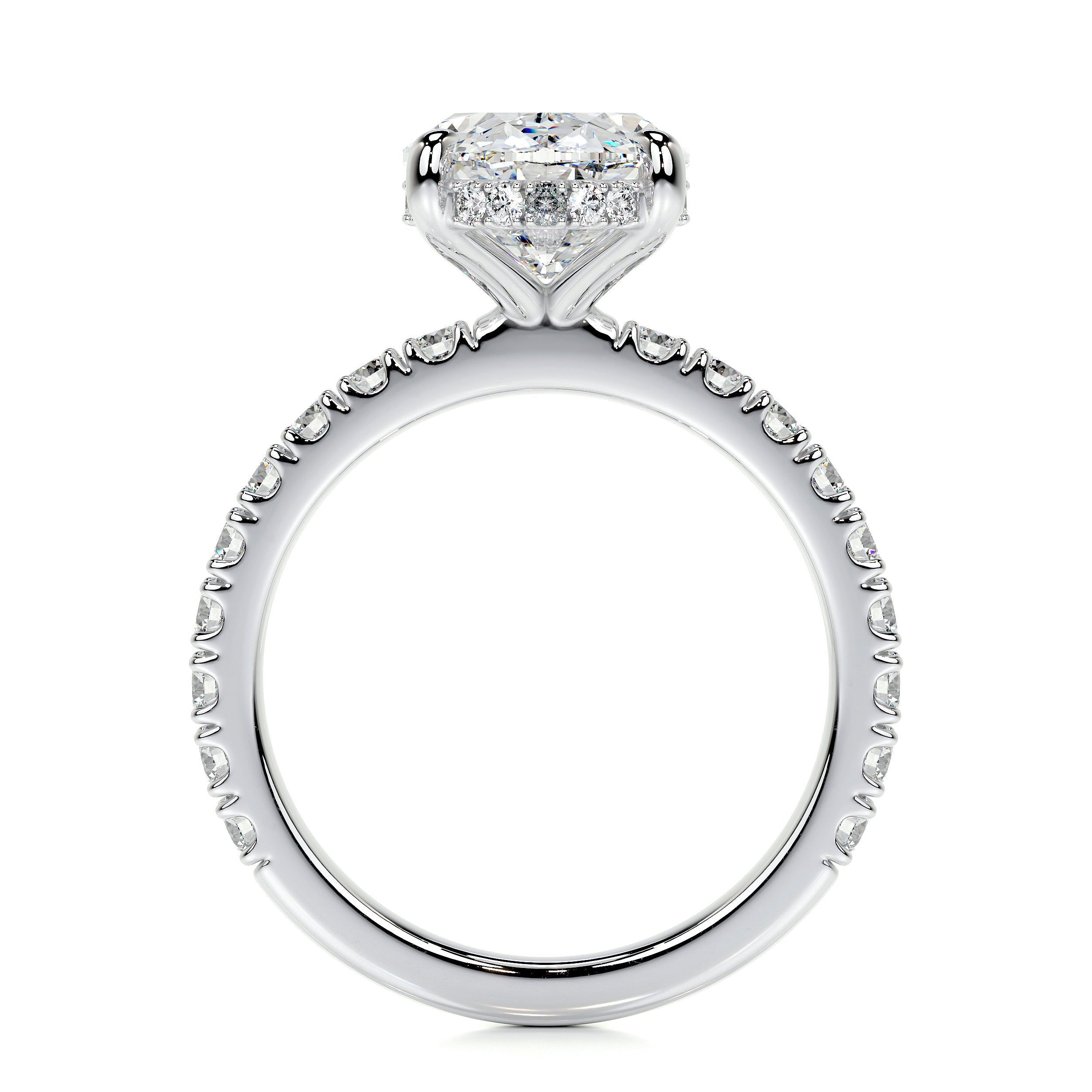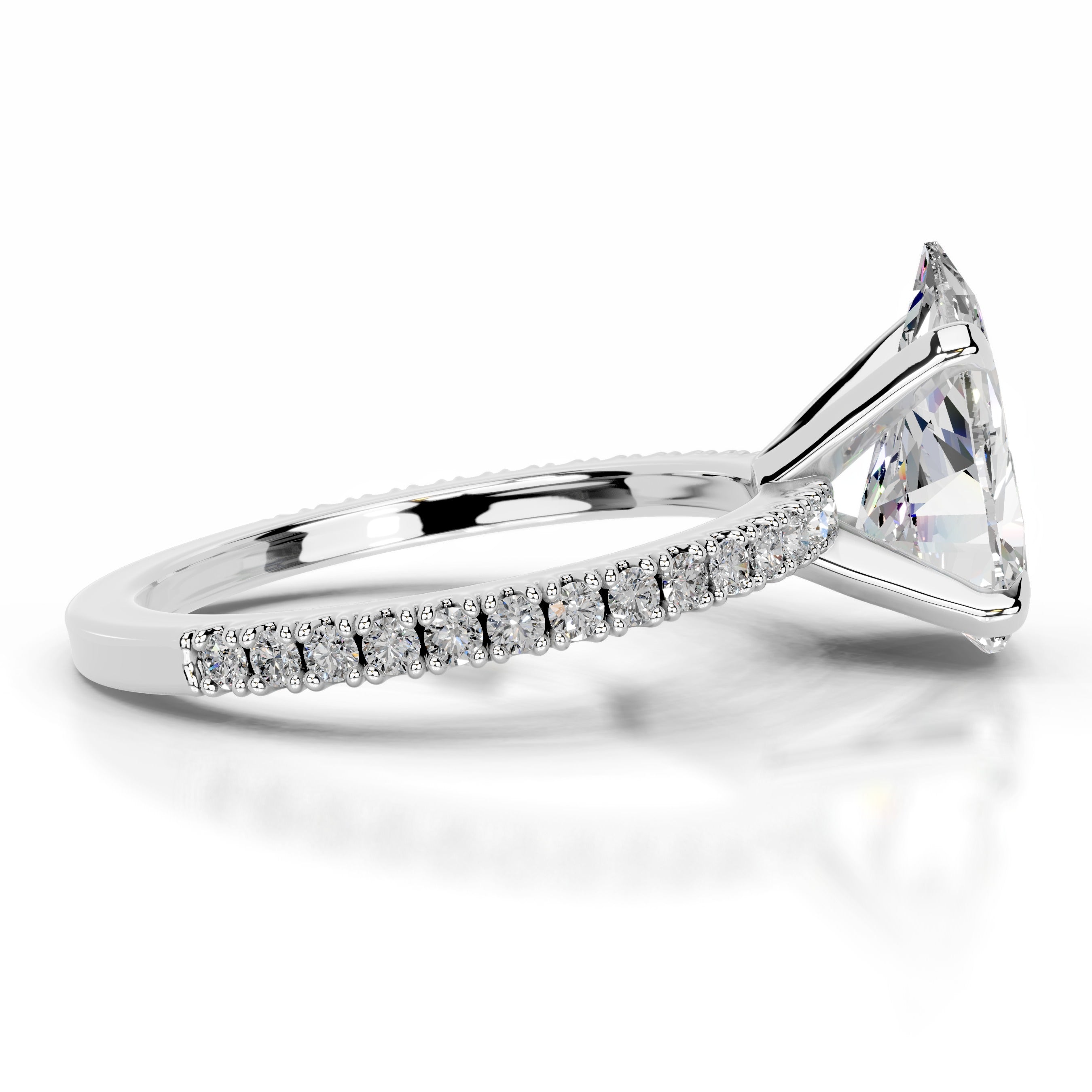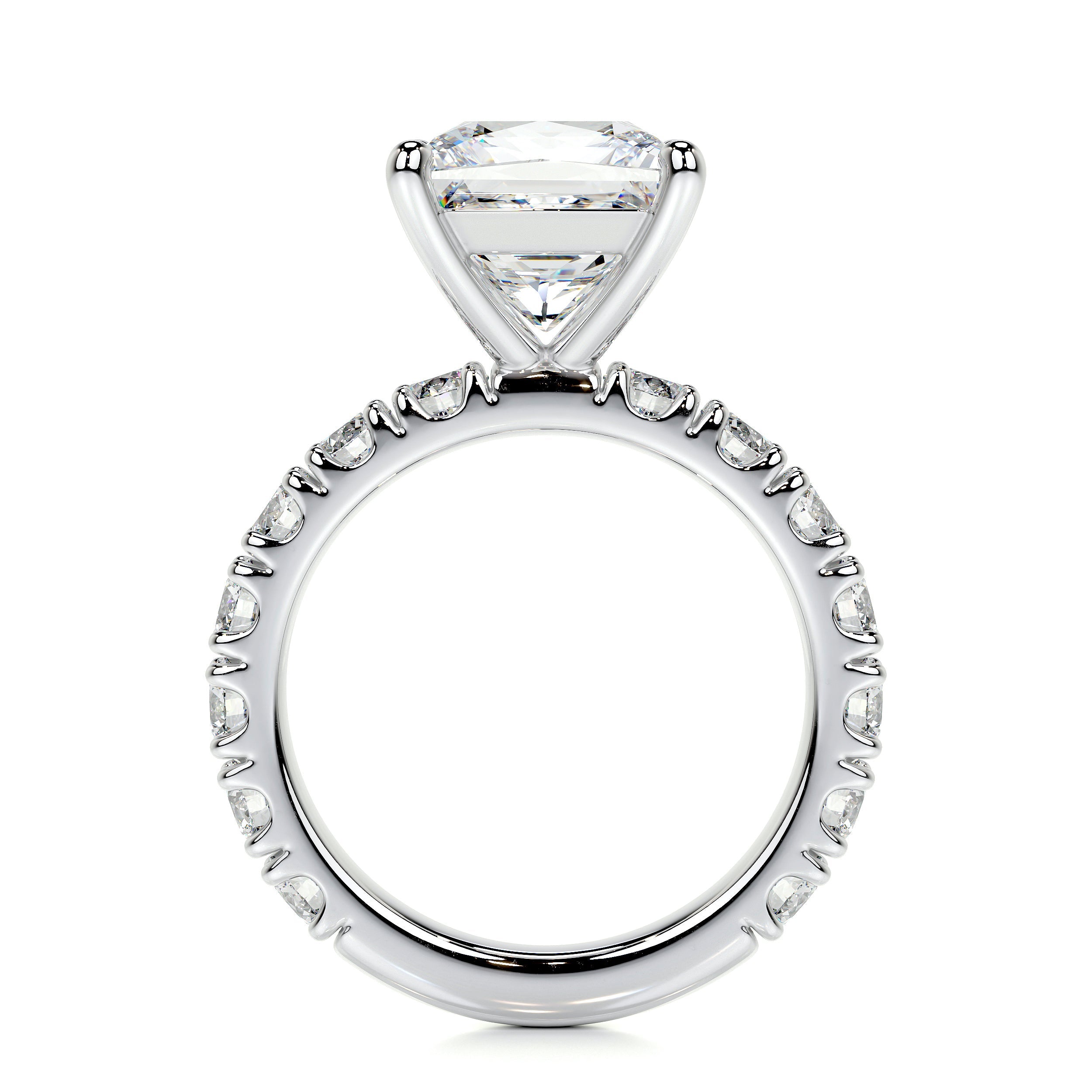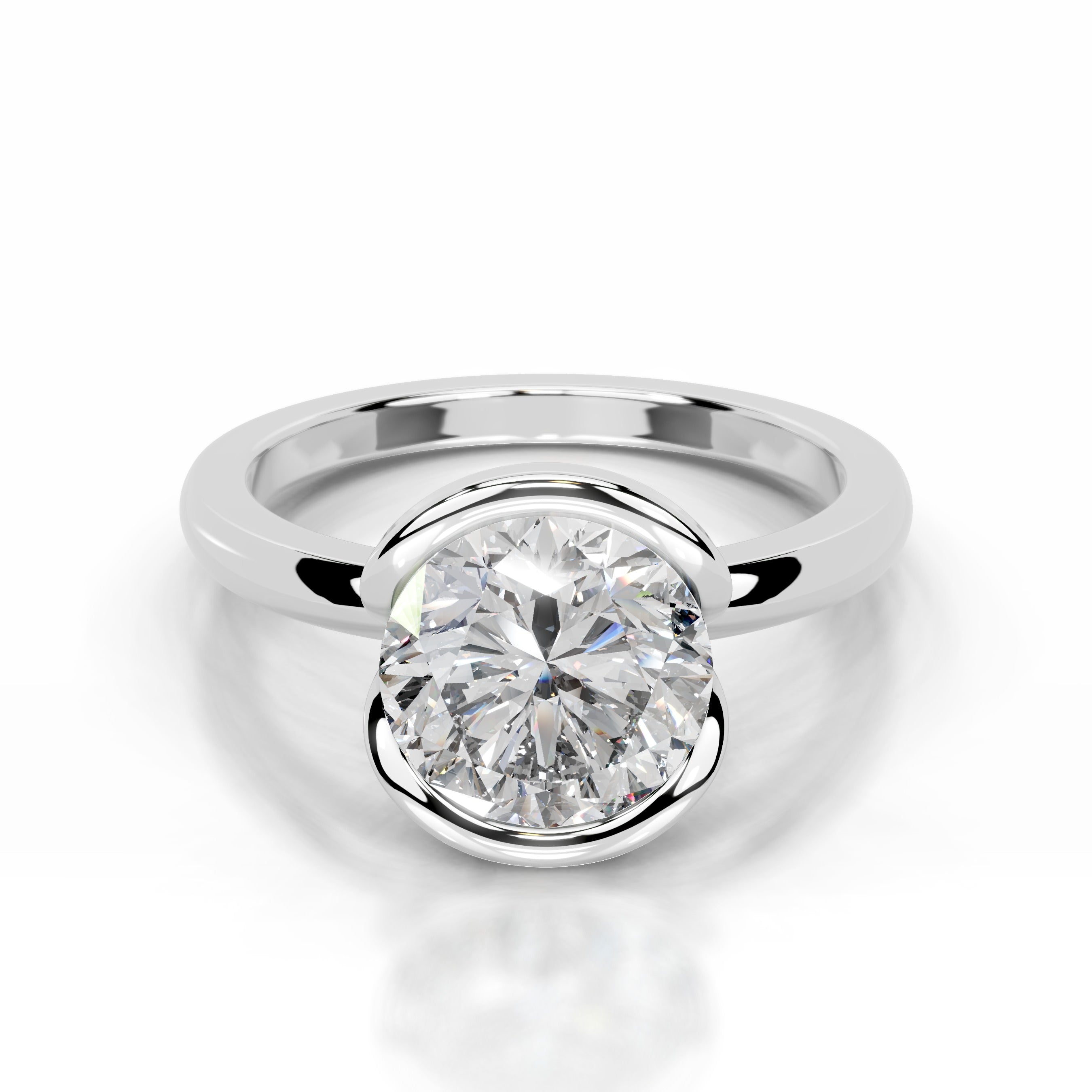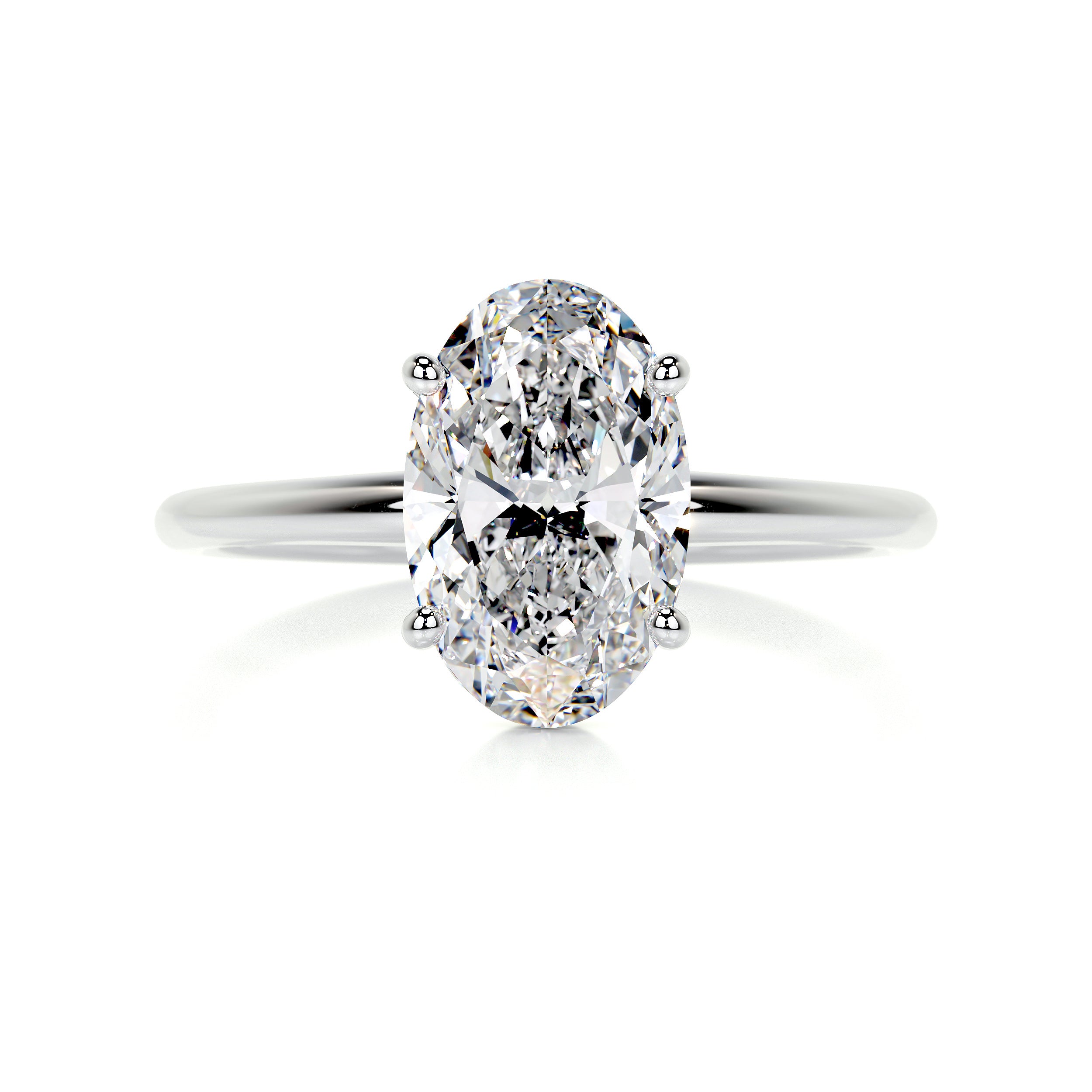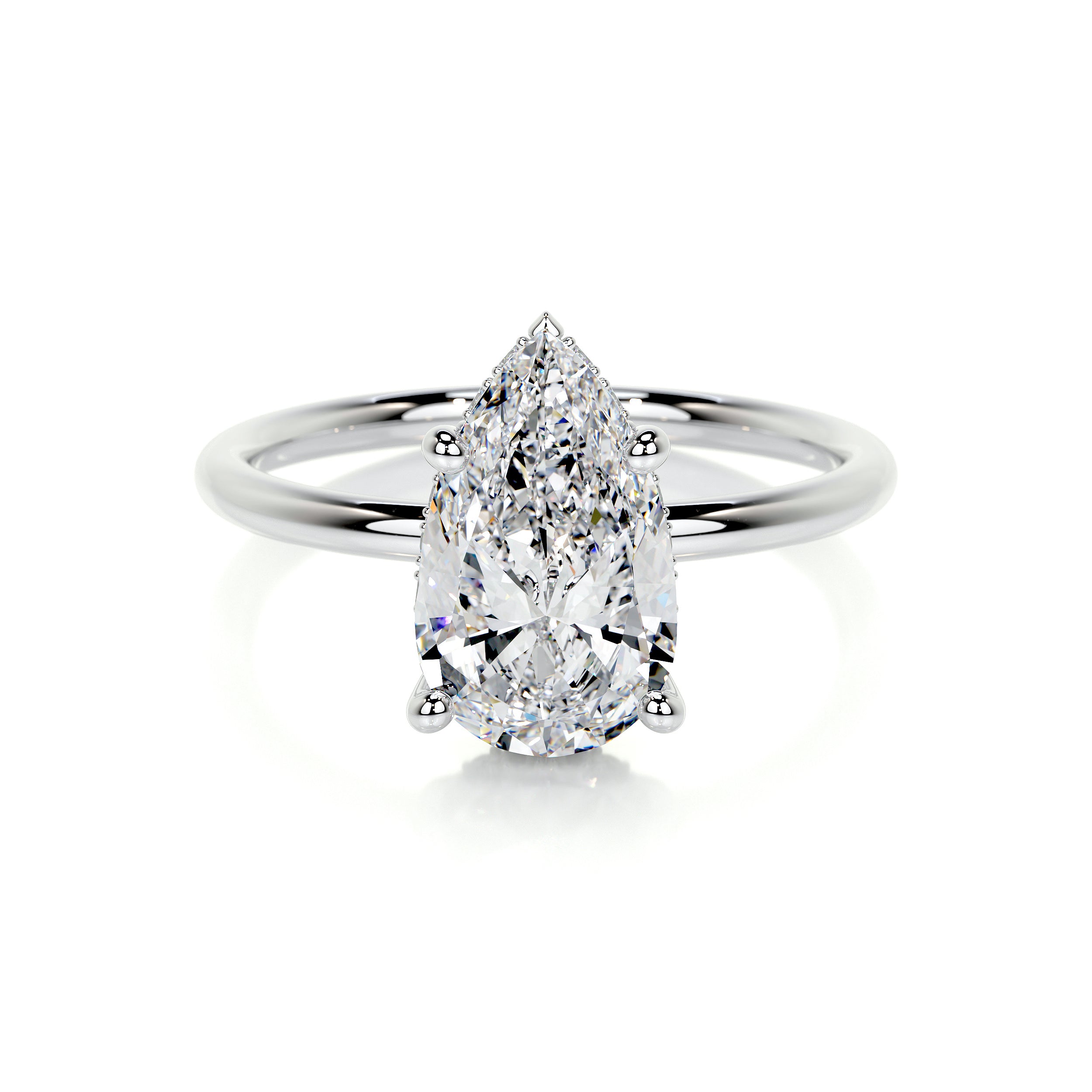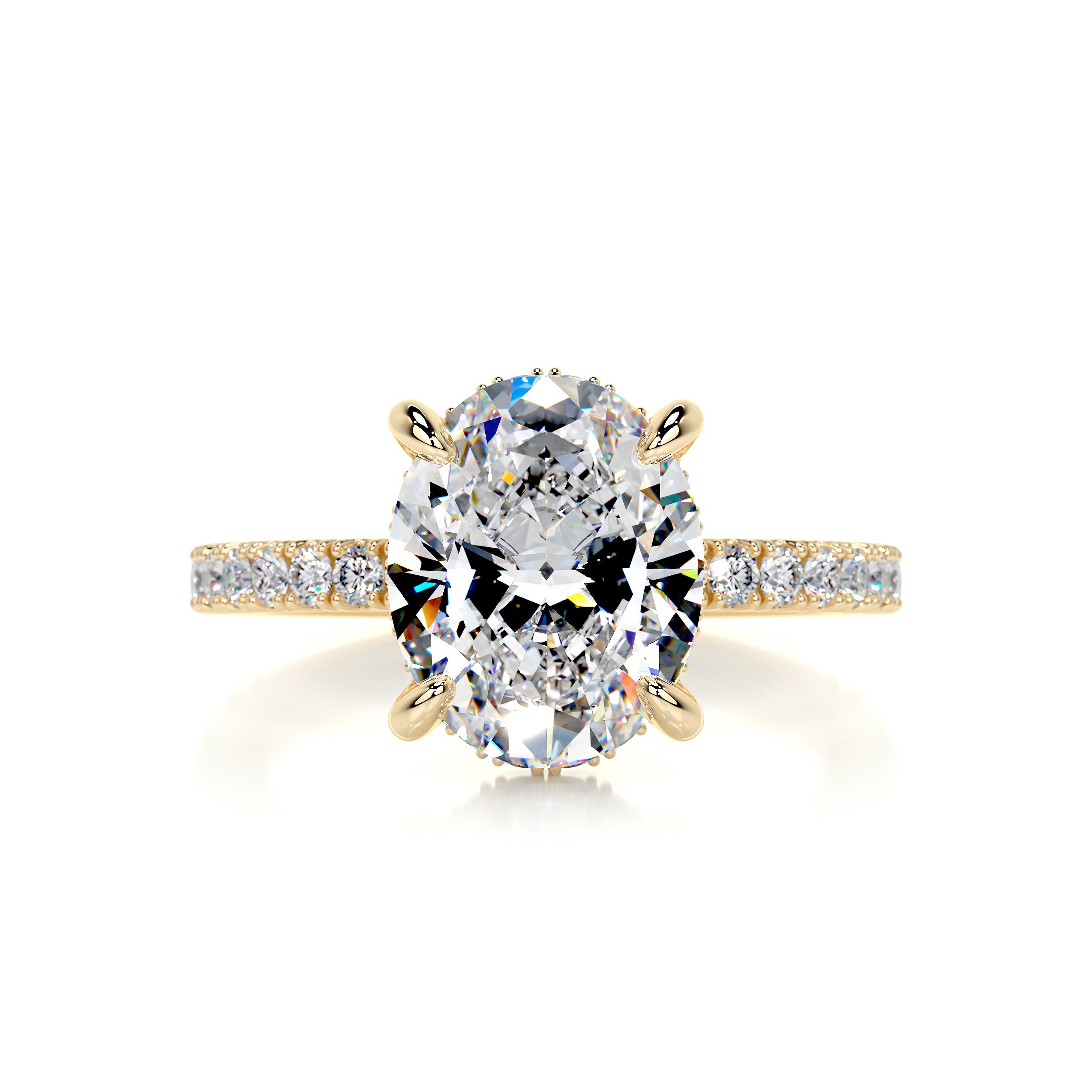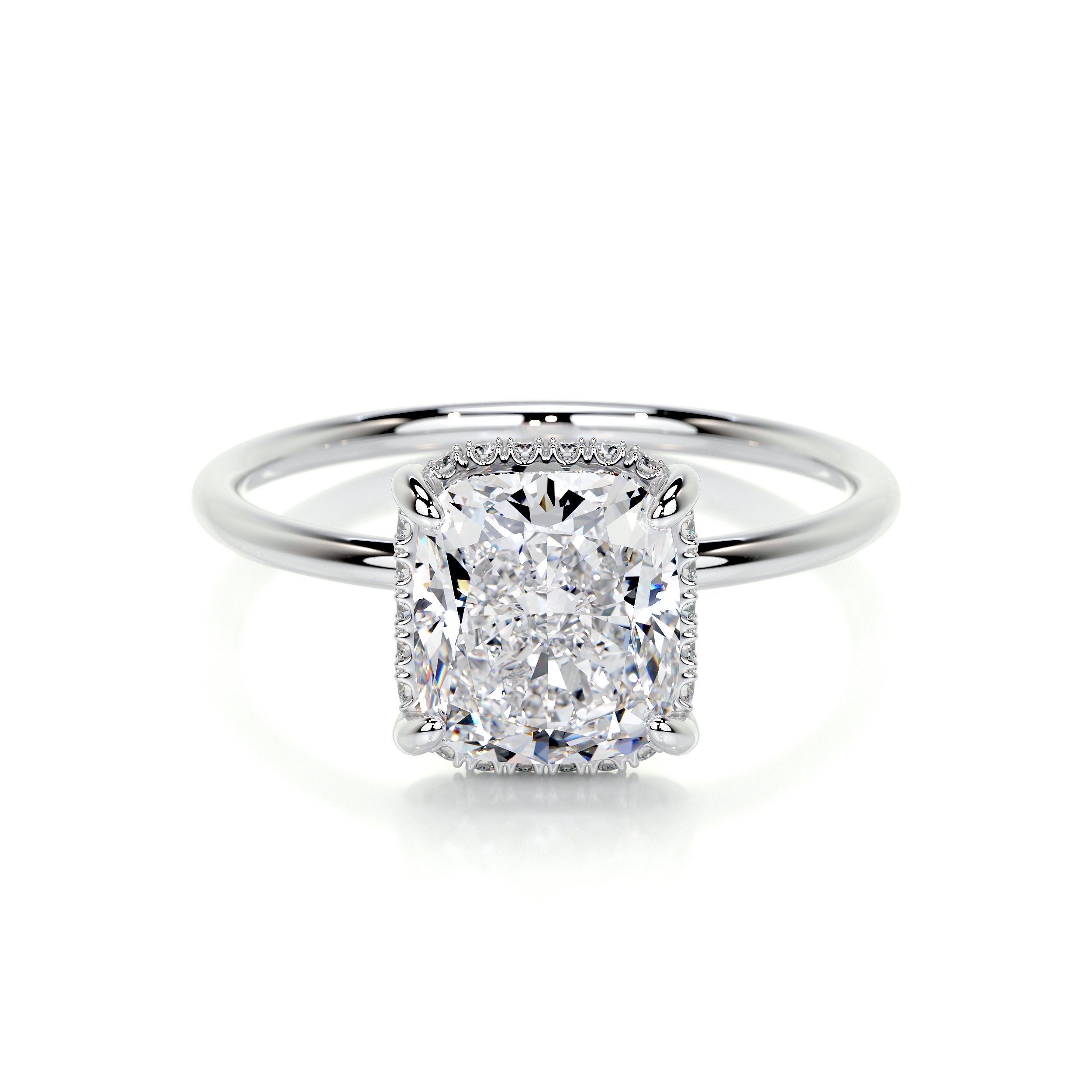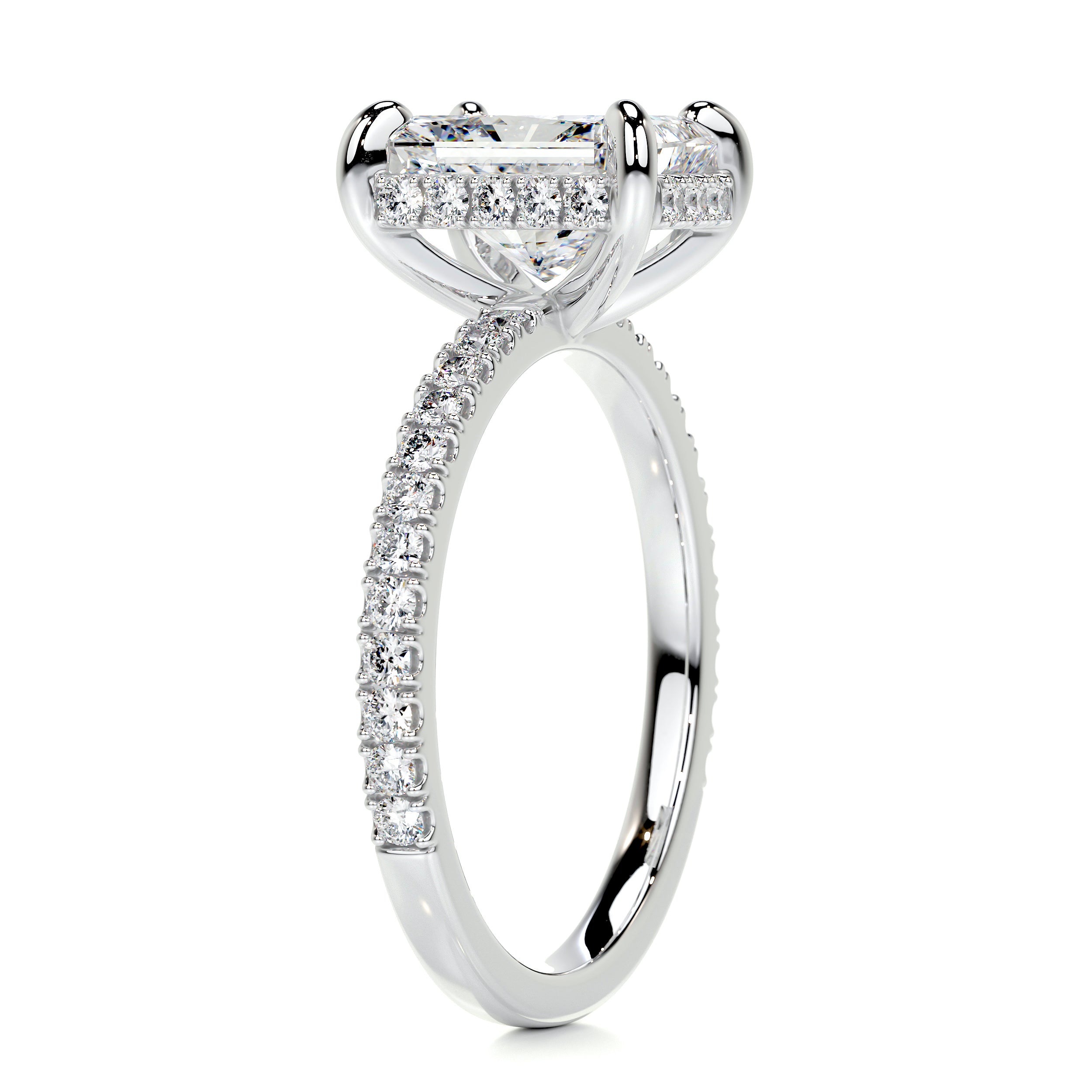The wide availability of alternate stones to diamonds today makes shopping for the perfect engagement ring an exciting venture. It can also be a bit perplexing. But it doesn’t have to be that way. Diamonds are the go-to-gemstone for traditional diamond engagement rings. And we’re all about that. If it’s not broken, why fix it, right?
Well, the engagement ring niche is certainly not broken—it’s simply widened with beautiful options for the bride today. It’s another way for a bride to personalize this important piece of jewelry that already carries so much sentiment and meaning for the couple.
Besides earth-mined diamonds, brides have a veritable smorgasbord of other gemstone options. A couple of these options are the glamorous Moissanite, and lab diamonds, both luxurious created stones. Let’s take a look at both of these superb gemstones that make perfect choices for engagement rings or any other jewelry item.

What is Moissanite?
Moissanite is a created colorless gemstone said to be an alternative—rather than a substitute for a diamond. The reason for this reference is that Moissanite is a stand-alone beautiful created gemstone—and doesn’t need to be thought of as a substitute for anything—diamond or otherwise. So, jewelry fans, even those who own earth-mined diamonds, still shop for Moissanite rings because they’ve fallen in love with it.
Gem quality Moissanite occurs in nature, albeit in very small crystals, and not large enough for jewelry making. Moissanite created in the lab has been commercially available for the last couple of decades---but not something most consumers were aware of. During this time, scientists have been hard at work perfecting the material. Today it ranks as a top choice for classic diamonds in any kind of jewelry.
Natural diamonds are composed of a single chemical, carbon. And they are the hardest known natural substance on earth, ranking 10 on a Mohs scale. By contrast, Moissanite was formed from 2 properties, both carbon, and silica. And while it’s not as hard as diamond, it’s almost as hard, ranking 9.25 on the Mohs scale. Because of its makeup, Moissanite has more fire—that sparkling brilliance that we look for in well-cut high-quality diamonds. Side by side with a similar quality diamond, the Moissanite will out-sparkle the natural stone every single time. That’s one of the reasons for its enormous popularity. That it costs quite a bit less than diamonds is an added benefit.
Consumers may not be able to recognize a Moissanite just by looking at it, but with some tutoring, a qualified gemologist or jeweler could help them identify the doubled appearance of the stone’s facets which is a signal that they may be looking at a Moissanite.
What are Lab Diamonds?
Lab diamonds are also created stones as the name implies. They have a completely different chemical makeup than Moissanite. The lab diamond was not meant to fool consumers but rather to mimic an earth-grown diamond. Lab grown diamond rings are called by various names, like a synthetic diamond, cultured diamonds, created diamonds, and also laboratory-grown diamonds. Those names are interchangeable as they mean the same thing. A lab diamond is composed of the same chemical makeup as earth mined diamond. Its optical, physical, and chemical properties are identical to its natural counterpart. It also ranks 10 on the Mohs scale, like a natural diamond. The difference—and it’s an important one—lies in its method of creation. Natural diamonds occurred where carbon, being hundreds of miles below the surface of the earth were found in conditions of extreme heat and pressure. It also took a couple of billion years for this transformation to occur. That converted the lowly carbon into the dazzling transparent sparklers we love today.

How are Lab Diamonds Made?
Lab diamond scientists took their cue from nature by setting up lab conditions whereby a minuscule diamond ‘seed’ was placed in a small container and then subjected to the same extreme heat and pressure as occurred in the diamond. This time, it took only about a month or so to produce a diamond crystal in a size large enough for cutting and polishing. Lab diamond evolution has become so sophisticated today that large carat size crystals are available for the most sumptuous jewelry types imaginable.
So, the lab diamond you select is by all technicalities a true diamond in every regard, except for its creation. It looks like a diamond acts like a diamond and is a diamond—albeit a created one. Manufacturers and retailers are not trying to ‘trick’ consumers, all lab stones can be identified by a gemological lab, and retailers want consumers to know what they are buying. Also, happily for shoppers, the price of lab diamonds is significantly less than those of natural earth mined diamonds. So, you get all the wow while still being easy on the budget.
Should I buy Moissanite or a Lab Diamond?
Many shoppers end up getting a large lab diamond or Moissanite than they would have ever been able to afford with a natural diamond. Comparatively, the lab diamond is always less than a natural diamond. And a Moissanite stone—the ultra-sparkler, is even more of a budget-friendly option. The choice is not obvious—just the same way that selecting a diamond (when all quality components are equal) is not always so obvious. It boils down to this. Buy what you like—what your budget dictates—and look at the stones. Jewelry collectors will tell you that when looking over several possibilities—one will stand out. One stone will speak to you. And that’s a perfect choice. Happy shopping.
